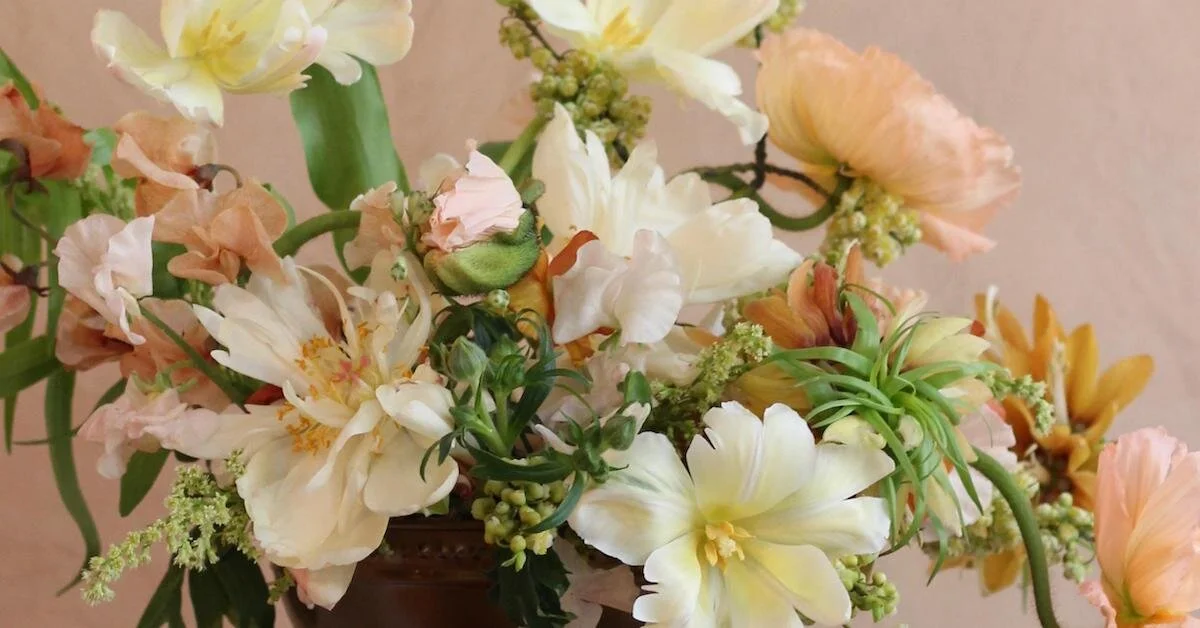Video: Centerpiece Design Quick Tips
Looking for centerpiece design quick tips? To build centerpieces that will interact perfectly with a tablescape without requiring much on-site tweaking, prepare a mockup of the event’s tablescape in your studio and adjust your arrangements to fit the parameters as you build each one. This kind of prep ultimately shows respect for your client’s guests as well as the other vendors who will be working to set beautiful, functional tables for the dinner hour at the event.
Tip 1: Designing Centerpieces for a Table
Notes:
Use a lift or pedestal container to create more space between the flowers and the dinner plate.
Create a mock table with similar sized pieces; as you create your arrangements, you can do your final check on that table to ensure flowers won’t interfere with the other items on the table. Clip out flowers that are in the way so you don’t have to do it on install day.
Tip 2: Centerpiece Flower Recipe
Tip 3: Using Lines in Your Centerpiece
Notes:
An actual line is a solid line, often created by a stem.
An implied line is like a constellation in the sky; your eye “connects the dots” to create these lines. In an arrangement, a series of the same flower creates this line.
There are multiple types of lines found in arrangements: Lines can be horizontal like the horizon, vertical like a pillar, diagonal like the side of a triangle or curved like a winding mountain road!
Lines in this arrangement:
This arrangement features an actual, diagonal line (gomphrena).
You also see implied, curved lines with queen red lime zinnias and burnt orange dahlias.
Finally, an implied horizontal line is seen with the lisianthus.
Tip 4: Deconstruction of the Centerpiece Design
Notes:
Gomphrena (10 stems)
Purpose: Finishing flower, adds the light, whimsical thought for a sculptural piece. Skip this if you’re going for a more tailored look.
Dahlias, Pink (3 stems)
Purpose: Focal Flower, Side 1. This is a resting place for the eye. You can have different flowers on different sides if you want to mix it up or can’t decide between two.
Queen Red Lime Zinnias (5 stems)
Purpose: Focal Flower, Side 2
Lisianthus (10 stems)
Purpose: Accent Flowers support the focal flowers and add interest. Often, I like to use these flowers to create lines within the arrangement that frame the focal point.
Dahlias, Orange (4 stems)
Purpose: Accent Flower
Snapdragons (6 stems)
Purpose: Long Flowers bring color and shape out to the sides of the arrangement and are key for a loose garden-style shape. If you work with all round flowers, your arrangement will appear round.
Limelight Hydrangea (2 stems)
Purpose: Base. This provides coverage low in the arrangement and the low, branching structure makes it a great “net” for flowers in the higher levels to be supported.
Sedum (5 stems)
Purpose: Base.
Pokeweed (3 stems)
Purpose: Shape, Cover. This piece helps us establish the overall size and shape of the arrangement.






